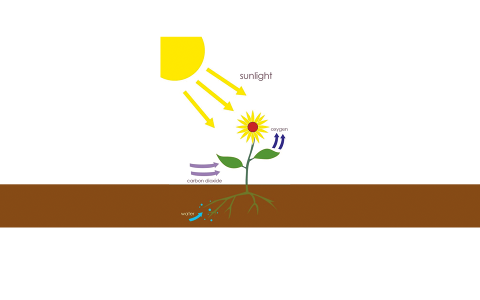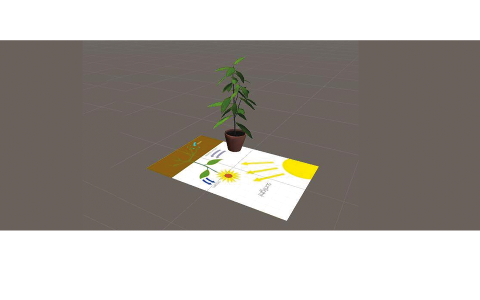Ulan Dakeev, Mariee Cruz Mendoza
A group of friends are out in the city, shopping. While they are walking down a crowded sidewalk, they hear a siren. That siren is a warning of an attack. People begin to run and scream when the friends hear a loud sound and see a bright flash. They can hear multiple explosions far away. Everyone starts looking for shelter. As the friends start running, they hear another, bigger explosion and a voice saying: game over!
As human beings continue to develop, modern technologies and the diverse applications of them are simultaneously evolving, too. Virtual reality is one of these evolutions. The National Aeronautics and Space Administration (NASA) defines virtual reality as “the use of computer technology to create the effect of an interactive three-dimensional world, in which the objects have a sense of spatial presence.” Virtual reality is a perception of something we cannot tangibly touch or see or hear, but that our senses perceive to be real. It focuses on the incorporation of engineering, design, and computer systems, with the main purpose being the simulation of different worlds. In virtual reality, users can experiment with a world that does not exist. “Virtual reality submerges humans into altered environments and processes, intensifies experience and imagination, thereby augmenting research and education” (Meinhold, 2013).
Even though virtual reality was created based on ideas developed in the 19th century, only recently has it become sophisticated enough and affordable enough to interest large groups of people. Different devices, such as headsets, omni-directional treadmills, and special gloves, are utilized to stimulate human senses with immersion, interaction, and involvement (Pinho 2004). Virtual reality has many potential applications in today’s world, such as architecture, medicine, engineering, entertainment, sports, and the arts.
Virtual reality could be a vital addition to the classroom. Even though the technology is still developing, many experts are aware of its possible educational benefits. Nowadays, many teachers struggle to keep students engaged with classroom topics. Virtual reality could keep kids more engaged and help them better understand the material. VR hasn’t yet become widespread in the classroom: according to a survey by Samsung Electronics America, around 2% of teachers have employed virtual reality technology in the classroom. Despite this, the survey also found that teachers believe that virtual reality is a tool that could engage and motivate students.
Today’s generation of students has been widely exposed to digital technologies. This familiarity with technology has changed how today’s students learn. They’re primed to use VR and other new technologies to enhance their education.
One of the areas where virtual reality might be most effective is “experiential learning,” which is defined as any learning that supports students in applying their knowledge and conceptual understanding to real-world problems or authentic situations where the instructor directs and facilitates learning (Wurdinger & Carlson, 2010). Any type of activity related to experiential learning not only helps teachers to cover the topics needed, but also helps to increase students’ motivation to learn. According to the University of Texas at Austin, experiential learning brings many benefits to students, such as producing more autonomous learners, deepening learning, and helping students to apply the skills learned through authentic activities.
According to the Virtual Reality Society there are multiple benefits when incorporating virtual reality into the classroom: a more active learning experience, an immediate engagement that helps students to simultaneously develop their knowledge and skills, improved concentration, and a better understanding of complex theories and concepts. VR is suited to all types of learning styles. The physicality of it increases retention. As Derek Hughes says, “Members of the digital generation thrive on creative and engaging activities, varied sources of information, and a more energetic environment.”
Research conducted using the Vive VR platform in China has shown that virtual reality offers new ways to unlock student potential. According to this report, titled “The Impact of Virtual Reality on Academic Performance,” VR can deliver significant and rewarding outcomes for students and teachers by increasing cognitive memory. The results also showed that test scores and knowledge retention improved when a VR-based education was utilized. “The more a learner is able to participate in life-like engagement, the easier it is to personally feel a connection to the subject material, making it easier for application and retention of the subject matter” (Kolo, 2017).
Not only can VR expose students to new ideas and environments, it is also an accessible tool that can bring new practices to disadvantaged students, students in remote locations, and students with mobility issues.
Although virtual reality offers many potential advantages to society, it might have some disadvantages, too. It is still developing, and its positive and negative impacts on society have not been fully studied yet. One of the potential disadvantages of VR is that it deteriorates the connections between people. According to Paula Hicks, VR helps people to have new experiences and to be immersed in those experiences; however, due to the lack of touch between people, virtual reality contributes to the degradation of human interaction, much as any other technology does. As human beings, communication is a necessity, but different reports have shown that the increase in the use of technology has been degrading people’s ability to interact with each other. Virtual reality is able to simulate different environments; nevertheless, it cannot simulate the communication, body language, and experience of human interaction.
It has been shown that some technologies have exacerbated mental illnesses in certain people. VR would pose the same danger: Paul Darvasi states that the use of virtual reality might trigger or aggravate preexisting and latent emotional or psychological disorders. This might be due to less social and physical activity and less face to face communication.
Another possible disadvantage of virtual reality is addiction to the virtual world. It doesn’t take a study for us to know that young people spend more and more time on their phones and computers. Virtual worlds are increasingly easy to access. If a young person is not developing their interpersonal connections, they could come to prefer the virtual world to the real one.
Another disadvantage of virtual reality is the cost of advanced technology. Due to the fact that VR technology is still developing, the market for it is unoccupied; it is still quite expensive. Most of the time, virtual reality equipment is purchased by schools for educational purposes or by rich people that can afford it. As a result, not many people are able to experience VR; there is the danger that only the elites will be able to benefit from VR technology, furthering societal stratification between the haves and the have-nots.
Like any emerging technology, VR is not yet well-regulated. There have already been court cases about patents, copyrights, trademarks, and other contract issues, all related to VR. The content of virtual reality is another area that will need to be regulated. As the industry continues to grow, there will be multiple issues similar to the ones in the video game industry. Although VR has not yet been properly researched, some ethical issues have already arisen. According to Fiona McEvoy, VR has raised concerns about issues such as sensory vulnerability, social isolation, desensitization, overestimation of abilities, psychiatric problems, virtual criminality, manipulation, and lack of privacy.
Despite the problems, with proper regulation and widespread availability, virtual reality could offer enormous benefits to teachers and students. Hopefully, in the coming years, more research will be done on the use of VR in the classroom.
References
- Durbin, J. (2016, August 20). Is Virtual Reality Too Expensive To Be Popular? Retrieved March 04, 2018, from https://uploadvr.com/community-download-virtual-reality-expensive/
- Hicks, P. (2016, December 13). The Pros and Cons of Using Virtual Reality in the Classroom. Retrieved March 04, 2018, from https://elearningindustry.com/pros-cons-using-virtual-reality-in-the-classroom
- Kolo, K. (2017, December 15). Virtual Reality: The Next Generation of Education, Learning and Training. Retrieved February 28, 2018, from https://www.forbes.com/sites/forbesagencycouncil/2017/12/13/virtual-reality-the-next-generation-of-education-learning-and-training/2/#22a3c6c8578b
- Moore, S. (2017, March 10). The Legal Reality of Virtual Reality. Retrieved March 04, 2018, from https://www.forbes.com/sites/schuylermoore/2017/03/10/the-legal-reality-of-virtual-reality/#45d4e7d62049
- Runcan, P. (2010, May 06). One minute more: Adolescent addiction for virtual world. Retrieved March 04, 2018, from https://www.sciencedirect.com/science/article/pii/S1877042810006166
- Virtual Reality Society. (2017). What is Virtual Reality? Retrieved February 28, 2018, from https://www.vrs.org.uk/virtual-reality/what-is-virtual-reality.html
- Virtual Reality Society. (2017, June 28). Benefits of virtual reality in the classroom. Retrieved February 28, 2018, from https://www.vrs.org.uk/virtual-reality-education/benefits.html
- The university of Texas at Austin. (n.d.). Experiential Learning. Retrieved February 28, 2018, from https://facultyinnovate.utexas.edu/experiential-learning
- Vive, H. (2016, December 08). New Research Suggests VR Offers Exciting New Ways to Unlock Student Potential. Retrieved February 28, 2018, from https://www.prnewswire.com/news-releases/new-research-suggests-vr-offers-exciting-new-ways-to-unlock-student-potential-300375212.html
|
BioPhoto_AR application from Google store (Figure 1) enables to visualize a 2D image (Figure 2) in 3D (Figure 3). |
||
 |
Figure 1. Android application to visualize a 2D image in 3D representation |
|
 |
Figure 2. Target 2D image to visualize in 3D representation |
|
 |
Figure 3. Three-dimensional representation of a 2D illustration in AR |
|









